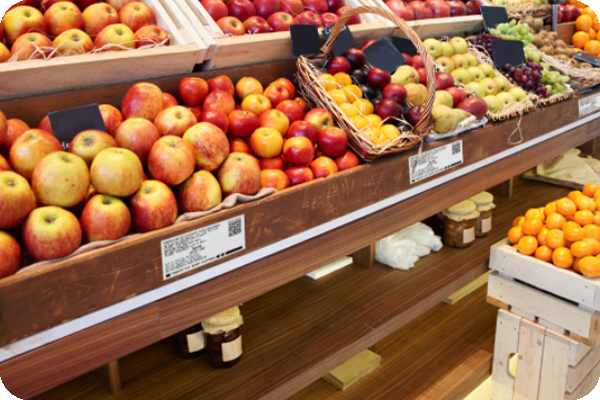Uncomplicating the Good Manufacturing Practices - GMP
If you want to know what Good Manufacturing Practices (GMPs) are, how to apply them, and which laws involve and regulate these practices, this post was made for you!
The implementation of GMPs is critical to guarantee the quality of your company's internal operations and offer safe products to consumers. It covers everything from the initial care regarding the facility’s project to the employee health.
If you work in the food production chain and still have questions regarding GMPs, read this post!
What are Good Manufacturing Practices?
Good Manufacturing Practices encompass a set of measures that must be applied throughout the food production chain in order to guarantee safety regarding hygienic conditions.
Periodic checklists, work instructions, and standard operating procedures (SOPs) are part of GMP. Their implementation prevents, for example, the foodborne illnesses.
Overall, the concept is based on the control of what is produced and delivered to customers, and is divided into industrial facilities, personnel, operations, pest control, raw material control, records and documentation, and traceability.
If you’re wondering if there are laws requiring the implementation of Good Manufacturing Practices, the answer is yes!
Having GMPs in place means complying with the following laws:
- SVS/MS Administrative Rule No. 326/97 is based on the "General Principles of Food Hygiene" of the Alimentarius Codex, which establishes the general requirements of hygienic conditions under the sanitary point of view, and of Good Manufacturing Practices for food producers and industries.
- Resolution RDC 275/2002 is a complementary normative act to SVS/MS Administrative Rule 326/97 and introduces the continuous control of Manuals and their content, promoting the harmonization of health inspections.
- MS Administrative Rule No. 1.428/93 establishes the guidelines for the establishment of GMPs in the food industry.
Attention! The absence or inadequacy of Good Manufacturing Practices can lead to consequences that range from warnings and fines, to the cancellation of the establishment's license.
With this in mind, below, we’ll explain which points you should consider in order to start developing your GMP manual, taking into account your establishment’s reality:
- Responsibilities: have a team dedicated to quality management to ensure compliance with the items described in the manual. With the training and commitment of everyone, the quality culture will be consolidated in the company.
- Facilities and equipment: establish safe hygiene standards and cleaning frequency according to your industry.
- Preventive maintenance and equipment calibration: describe the maintenance practices in order to avoid failures.
- Waste management: define the separation system between recyclable and organic waste according to the legislation applicable to your company.
- Pest control: establish preventive and corrective measures to prevent the attraction, access, and harboring of pests.
- Water and energy control: implement controls to avoid product contamination, including the analysis of water drinkability, cleaning the water tank, and installing light fixtures with protection against falls and explosions.
- Operation: Have detailed procedures for each operation that can indirectly or directly interfere with the quality of the finished product - receiving, storage, thawing, handling, and distribution.
- Selection of raw materials, ingredients, and packaging: Know the origin of the foods you sell and evaluate their quality.
- Quality control: Invest in production methods and quality control standards.
- Personal hygiene and employee health: Instruct employees on hand and uniform hygiene, and the required examination frequency.
- Traceability and recall: Control all stages of your supply chain, providing key information for risk analysis and management.
With this information, you can see that implementing Good Manufacturing Practices helps you keep your current customers and attract new ones. With well-implemented GMPs, your establishment will guarantee food safety, as well as your product’s final quality.
As stated by a law of physics, every action creates a reaction of equal intensity. No company is safe from being replaced by its customers, if it isn’t concerned about the quality of its deliveries.
One of the main reasons why customers replace companies is the poor quality of their products or services. Not implementing GMPs can lead precisely to this perception: problems with quality!
Because of the lack of controls, the contamination of products, unnecessary expenses with nonconformities, and difficulty in following directions by employees occur.
Keep in mind that if you offer a safe product, it will result in customer satisfaction. Never leave until tomorrow the product quality you can achieve today!
Advantages:
Certain companies still haven't adopted GMPs, or don't update them according to the changes in their production chain. Ask yourself if you’re one of them.
What guarantee do you give your customers regarding the processes you carry out? Can you describe the each of your employee’s role in ensuring food safety?
The lack of information about the advantages that the program provides is the main reason why many companies are in this situation.
Don't be part of this group! Understand how GMP implementation can help you:
- Improved company image and market competitiveness: It shows that the company cares about food safety and takes measures to guarantee it.
- Better control of process parameters and finished product: quality control is most effective when it involves operations, such as inspection practices, from the raw materials to the finished product.
- Product with better, constant, and safer quality: standardization of the production chain is ensured, resulting in the guarantee of the product's sanitary safety, uniformity, and reduction of returned cargo.
- Cleaner and safer work environment: ensures the organization and well-being of employees, and prevents the contamination of your products.
- Increased product shelf life: the detection of factors that are affecting product shelf life is more assertive.
- Preservation of employee health: establishes fundamental hygiene procedures for food handling, such as sanitizing containers and preserving products, ensuring not only the safety of the food, but also of employees.
- Cost reduction: a control of input and output of products and inputs is created, avoiding the waste of food and money.
- Compliance with current laws: the National Health Surveillance Agency (ANVISA) is responsible for the inspection, and is based on the federal government's sanitary laws. GMPs can be used in sanitary inspections to inform the start of manufacturing of a product exempt from the obligation to register and request a sanitary license.
Where do you start?
- Make a diagnosis
Performing a diagnosis through a pre-audit with the use of a checklist is essential to determine the establishment’s hygienic-sanitary conditions.
The diagnosis contributes to better decision making and defines the overall roadmap for the drafting of the Manual for Good Manufacturing Practices. You’ll have a clear, simple and precise view of what needs to be accomplished.
As a result of the pre-audit, you’ll have a report of nonconformities and the corrective actions that need to be adopted in order to implement them in the company.
With the analysis in hand, you can start developing your Manual for Good Manufacturing Practices.
- Prepare your Manual for Good Manufacturing Practices
The structuring of the GMP Manual must be carried out by experts in food quality control. The corrective actions are carried out with the company according to the requirements of the legislation.
Responsibility
All health standards that are part of GMPs were established so that consumers have a guarantee of what they are buying and consuming. Respecting the rules is crucial in order for the company to offer safe and quality products.
Ensuring food safety by controlling the hygienic conditions of products and processes leads to not only consumer satisfaction, but also makes the employees' job easier.
The decisions you make are critical to your market recognition, and you have seen how easy it is to produce a safe product more efficiently than your competitors by implementing Good Practices.
In this context, the challenge of adopting GMPs won’t be a matter of merely complying with the law, but by making a difference.
Automate the management of Good Manufacturing Practices
In order to achieve GMPs, you should keep a checklist to verify their proper operation. In order to make this process easier, you can automate this verification through software and checklist tools specialized in the food production chain, such as CLICQ.
CLICQ is a solution that automates quality process management, which can help your business implement Good Manufacturing Practices. Learn more about the solution in this one-minute video:
Did you like the checklist automation tool? Talk to one of our experts and have the control of GMPs in your company. Click here we will contact you.
If you have any questions, we’re here to help you! 💙
+Content
We have listed additional content that you will enjoy:
- 5 most widely used types of Quality Management indicators



